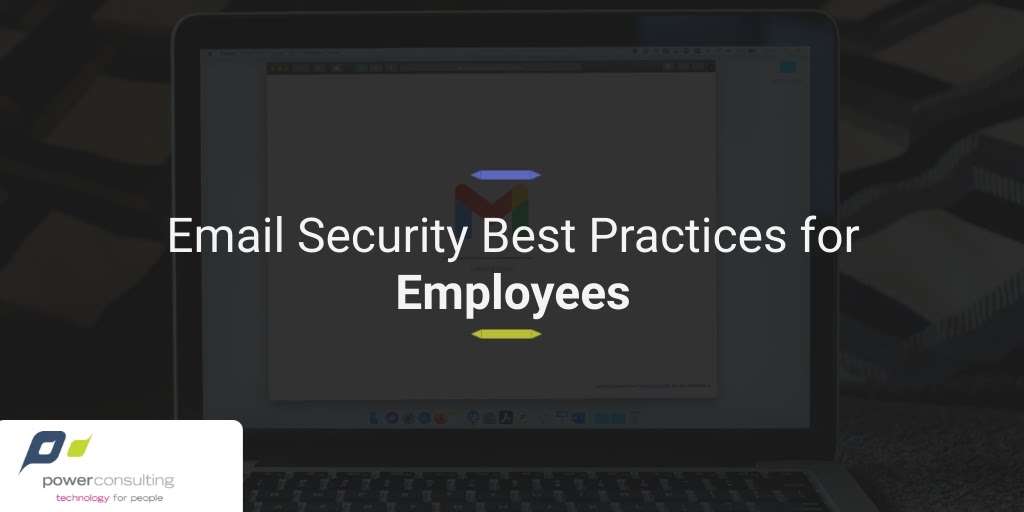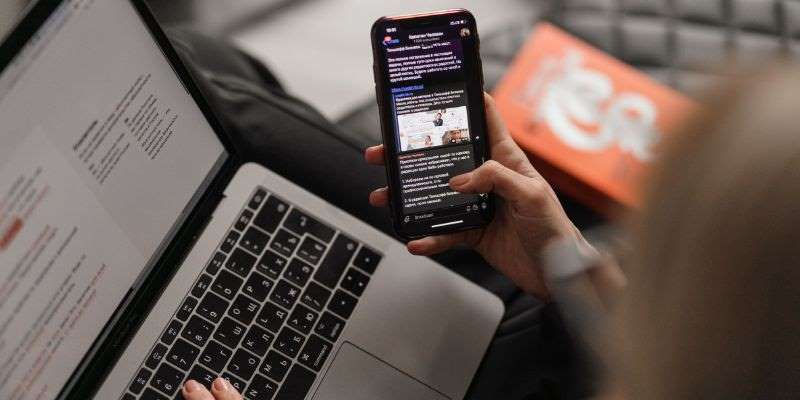

The world of online threats is as vast as it is dangerous to your business’s bottom line.
These days, it’s not enough for businesses to set a policy and simply expect it to be followed. Phishing scams are carried out on an individual level and therefore require an individual focus to combat them. That’s why it’s so important for your staff members to be aware of these email security best practices for employees.
Here are a few facts about email scams you may want to know about:
- 91% of data breaches are caused by phishing
- 91% of phishing threats begin with a phishing email
Those are some sobering statistics.
To help prevent your business from falling victim to malicious email attachments, losing sensitive information and becoming prey to other security threats, you’ll want your team members to learn and practice these 5 email security best practices for employees:
Email Security Tip for Employees #1: Only Use Secure Devices
One of the best ways that employees can protect their sensitive data from email attacks and defend against these cyber threats is by ensuring they’re working off of secure devices.
A secure device is usually any device that is supplied by an employer, as they can control the security settings and make sure the right antivirus software is installed.
In a world where Bring-Your-Own-Device (BYOD) is becoming ever popular, employers and employees alike need to be more aware of the inherent risk that this strategy poses.
With an unsecured device, it’s all too easy for a hacker to steal personal information or even sensitive business data by hacking an email account and following the trail of digital breadcrumbs to the big data lode they’re looking for.
| Interested in Having Your Remote Workers Remain Truly Productive? These Short Articles Can Tell You How. |
Email Security Tip for Employees #2: Practice Excellent Password Habits
A key component of any email best practices for employees is coming up with strong passwords and using multi-factor authentication.
In fact, these two strategies ought to be a part of every company’s email policy best practices because together they make it much harder for hackers to gain access to any account (including email accounts) making the combination one of the best email security solutions to employ.
Strong passwords are typically the kind that use letters, numbers and other symbols all together, and aren’t associated with the user’s personal life (like a birthday or the name of a family member). They should also be changed every 3 – 6 months.
The harder (or hopefully impossible) it is to guess a password, the better it performs in its intended role.
Multi-factor authentication is where a randomly generated numerical code is sent to a secondary device unique to the user (like a mobile device) every time they attempt to log in.
Using these two business email best practices will drastically reduce the number of successful phishing scams your business is likely to experience.
Email Security Tip for Employees #3: Keep it Work-Related & Don’t Overshare
This is an important consideration and email security best practice for employees and businesses alike. Oversharing is primarily the most dangerous via social media, especially if you use personal information for your passwords.
Obviously, most people don’t go around sharing their social security numbers in an Instagram story. But many people don’t bat an eye at listing the name of their pet or child, some of which can be used against you to guess passwords.
In general, be cautious of what you say and post online. Hackers often use social media as a way of gaining intel about a person before launching an attack. But you’ll also want to avoid oversharing when it comes to sending emails to internal employees as best practices for security. Data breaches can also come from internal sources, so be wary.
Email Security Tip for Employees #4: Make Sure Your Device has Antivirus Software
If your business does partake in a BYOD policy, make sure your managed service provider is one that monitors and manages end-user devices. This way, your critical business data will be less vulnerable to employees opening spam emails or other harmful cyber threats.
Installing firewalls and other similar device defences are recommended as well. When it comes to the devices your employees use every day, you’ll make them as secure as possible.
Email Security Tip for Employees #5: Learn About Phishing Attacks & Techniques
A phishing scam is primarily a hacking attempt that tries to fool the employee via email, to give up personal or financial information.
The ultimate goal of the hacker is usually financially motivated, and often the phishing scam itself is merely their attempt at gaining initial access to your system.
Here are a few red flags your employees should be aware of when watching out for phishing attacks via email:
- Be aware of odd-looking email addresses
Often the hacker will send the email from something that looks very close to a reputable or recognizable email address but is off in one key aspect. This could be the difference between a .com or .net suffix. - Requests for personal information
If the email is asking you to divulge or send personal info, that’s a red flag. - Multiple links
Does the email contain multiple links they’re asking you to click on? There’s a good chance that’s a phishing scam. - Poor grammar and spelling
Many phishing attacks are carried out by non-native English speakers operating all over the world who are great at hacking, but not so great at perfect English sentence structure. Usually, this can signal a phishing attempt.
Getting Help Enacting Email Security Best Practices for Employees
If establishing rigorous and effective email security best practices for your employees seems like a daunting task, we can help.
Talk to us today about our managed IT services and let’s qualify your email and IT needs together during a free consultation.


